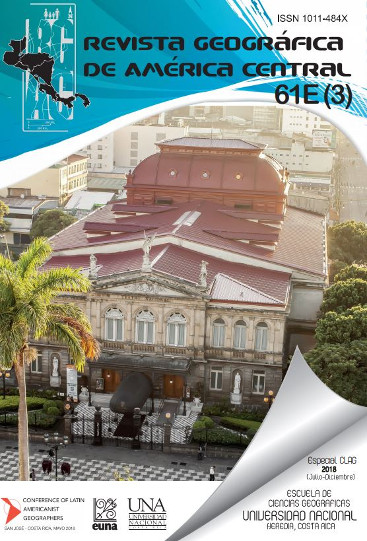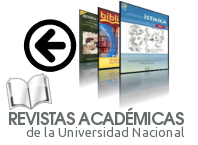Gendered economy in the Mosquitía: women’s roles in a changing indigenous economy
DOI:
https://doi.org/10.15359/rgac.61-3.7Palavras-chave:
Miskitu, indigenous economy, autonomy, womenResumo
This paper explores frst hand perceptions of Nicaraguan Miskitu women’s role in their local economy. Attention is paid to how economic practices have changed over time and whether change spurred by outside influences – such as corporate ventures and NGOs – have eroded the authenticity of an indigenous economy. Some historical economic practices are explored with a focus on the post-war economy and how political autonomy has affected women’s role. Surveys of Miskitu women obtained during feld research, with support from relevant literature, comprise the main source of information considered.
Referências
Cunningham Kain, R. (2011). The Grandmothers of the Wangki. In T. Foundation, Indigenous Women, Climate Change and Forests (pp. 3-40). Baguio City, Philippines: Tebtebba Foundation.
Cunningham, M. (2012). Knowing Mirna Cunningham. Retrieved from Mirna Cunningham: www.mirnacunningham.org
Escobar, A. (1995). Encountering Development: The Making and Unmaking of the Third World. Princeton: Princeton University Press.
Fenly, N., IIWF, & CADPI. (2011). Forests and Indigenous Women in Tuapi: "Return to Auhbi Piakan". In T. Foundation, Indigenous Women, Climate Change and Forests (pp. 41-74). Baguio City, Philippines: Tebtebba Foundation.
Helms, M. W. (1971). Asang: Adaptations to Culture Contact in a Miskito Community. Gainesville: University of Florida Press.
Henricksen, K., & Kindblad, C. (2011). Neoliberalism, Patriarchal Rule, and Cultural Change at the Turn of the Twentieth Century: The Case of Tasbapauni. In L. Baracco (Ed.), National Integration and Contested Autonomy: The Caribbean Coast of Nicaragua (pp. 191-220). New York: Algora Publishing.
Herlihy, L. H. (2006). Sexual Magic and Money: Miskitu Women's Strategies in Northern Honduras. Ethnology , 45 (2), 143-159.
Herlihy, L. H. (2012). The Mermaid & the Lobster Diver: Gender, Sexuality, and Money on the Miskito Coast. Albuquerque: University of New Mexico Press.
Nietschmann, B. (1973). Between Land and Water. New York: Seminar Press.Tebtebba Foundation. (2010). Towards an Alternative Development Paradigm: Indigenous
People's Self-Determined Development. (V. Tauli-Corpuz, & L. d. Enkiwe-Abayao, Eds.) Baguio City, Philippines: Tebtebba Foundation
Downloads
Publicado
Como Citar
Edição
Seção
Licença
Política proposta para revistas que oferecem Acesso Aberto
Os autores que publicam nesta revista concordam com os seguintes termos:
a. Os autores mantêm os direitos autorais e garantem à revista o direito de ser a primeira publicação do trabalho, sob a Licença Creative Commons https://creativecommons.org/licenses/by-nc-sa/4.0/deed.es, que permite que outros compartilhar com reconhecimento da autoria do trabalho e da publicação inicial nesta revista.
b. Os autores podem estabelecer separadamente acordos adicionais para a distribuição não exclusiva da versão do trabalho publicado na revista (por exemplo, colocá-la em repositório institucional ou publicá-la em livro), com reconhecimento de sua publicação inicial nesta revista. Esses acordos adicionais devem respeitar os termos da licença: ou seja: não envolver lucro e compartilhar com a mesma licença.
c. Os autores são incentivados a arquivar a versão/PDF pós-impressão ou do editor em repositórios de acesso aberto.







 REVGEO está licenciado sob https://creativecommons.org/licenses/by-nc-sa/4.0/deed.es
REVGEO está licenciado sob https://creativecommons.org/licenses/by-nc-sa/4.0/deed.es
.svg_4.png)

_(1).png)
_(1)_(1)_(1)_1.png)
(2)(1)(1)(1).png)
